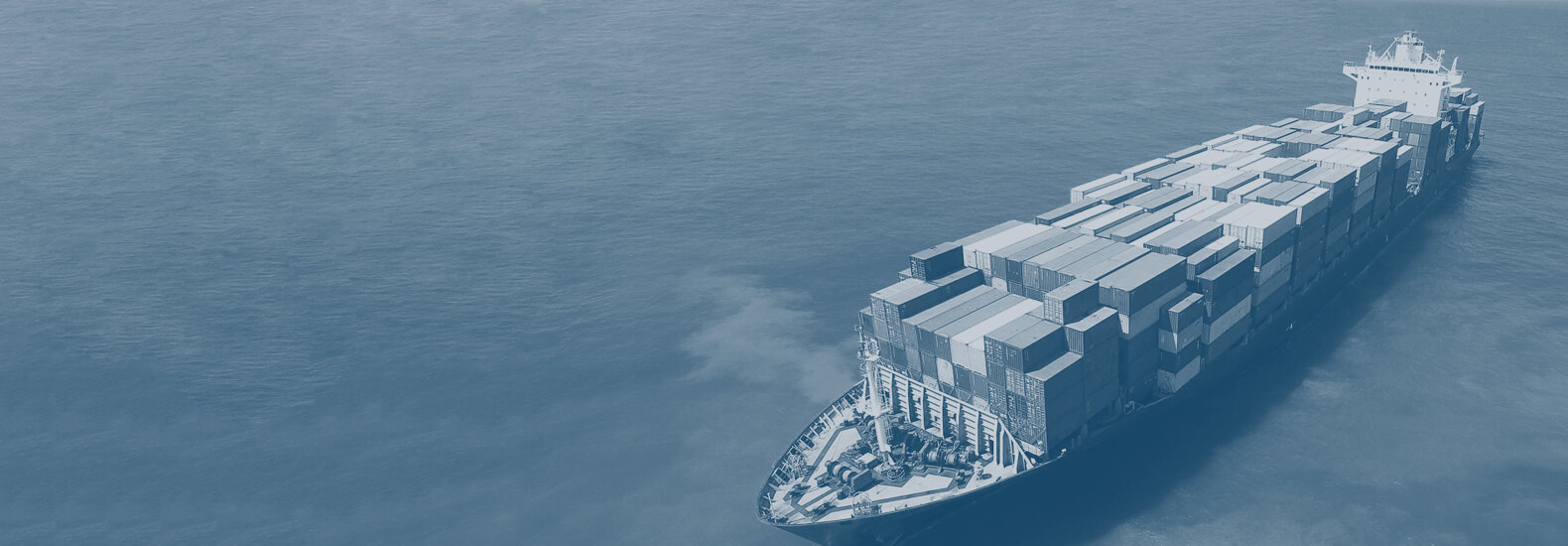Sustainable shipping
How to shape the future of shipping?
Discover more about the prospects of maritime freight transportation, the potential solutions to achieve green shipping and how you can contribute.

According to the International Chamber of Shipping (ICS) and the International Maritime Organization (IMO), the global merchant fleet is responsible for about 3% of global carbon dioxide emissions, equivalent to the annual emissions of a major developed country like Germany.
If no action is taken, they will account for around 17% of global CO2 emissions in 2050.
01. Solutions
Solutions for sustainable shipping
The Solar Impulse Label is granted to innovative solutions for sustainable shipping that meet high standards of sustainability and profitability.
Each solution goes through a strict assessment process performed by independent experts.

02. Definition
What is sustainable shipping?
Shipping refers to the long-range transportation of most raw materials. Maritime freight transport can also concern various goods and finished products, transported in sea containers.
Green shipping is the concept of sustainable development applied to the shipping sector, incorporating environmental and social responsibility.
According to an OECD report, a total decarbonization of the sector would be possible by 2035 if the 3 following options are combined:
- 1. Technological measures, through improving energy efficiency and storage;
- 2. Operational measures, including slow steaming (reduction of the vessel speed);
- 3. Renewable energy, by developing the use of biofuels or wind power.

03. Classification
Types of merchant ships
Marine freight shipping industry includes different types of merchant vessels:
- 1. General cargo ships, including multi-purpose vessels and roll-on/roll-off (RoRo) that are designed to carry cars, trucks, trailers, etc.
- 2. Container ships, carrying stacks of uniform steel containers loaded with materials and goods, form a common means of commercial intermodal freight transport.
- 3. Tankers, ships designed to transport huge quantities of liquid such as oil and chemicals.
- 4. Bulk carriers, transporting bulk cargo items such as iron ore, cement, coal or grain.
- 5. Coastal trading vessel, used for trade between locations on the same continent.
04. Advantages
Water transport advantages

Flexibility and reliability
Marine shipping can be used to transport a large consignment of goods to the other end of the world, but it can also be used to send small-format goods on a short distance. Container shipping is a highly flexible and reliable means of transporting cargo, as it can carry dangerous liquid materials as well as solid commodities such as foodstuffs.

Low cost and large capacity
The first advantage of marine shipping is that it is quite cheap. On the one hand, because container transport requires short handling time. On the other, it is due to the fact that costs related to insurance are low, as maritime transport is safer than other modes of transport. In a nutshell, sea transportation is more competitive because it can carry very large volumes of goods at an affordable price.

Ecological edge
Apart from its economic advantage, it is also the most ecological. In fact, the boat provides lower energy consumption and emissions of products harmful to the environment than land transport or air transport. Maritime transport is and will probably remain for a long time the least polluting mode of transport per tonne of goods transported over long distances.

05. Challenges
Water transport challenges
Even though there are a lot of advantages of sea transport, it also has its share of drawbacks:
![]()
1. Slow speed
Ocean freight is a slow and time-consuming mode of transport, which can be a brake on its competitiveness. Moreover, there might be weather obstructions causing delays.
![]()
2. Environmental impact
Considering that more than 90% of the world’s traded goods travel by sea, it obviously has an environmental impact. Even though maritime freight is not as polluting as land or air transport, it also causes greenhouse gas emissions, as well as sound and oil pollution. Besides, the shipping industry is still using highly polluting bunker fuels like heavy fuel oil (HFO) for economic reasons. The danger it poses is real. First for the marine environment, but also for the populations living near the coasts, since fine particles emanating from the ships can be carried hundreds of kilometers.

A challenge, #1000 Solutionsto change the world

A label focused on both the environment and profitability.
For the first time a label proves the economic profitability of solutions that protect the environment. The Solar Impulse Foundation is selecting 1,000 solutions that protect the environment in a profitable way and awarding them the Solar Impulse Efficient Solutions Label.
Collaborating with independent experts and with renowned institutions, the World Alliance proposes to evaluate its members solutions free of charge. The Solar Impulse Efficient Solutions label will offer a competitive edge to innovators and a guarantee of quality to solution seekers.

A label focused on both the environment and profitability.
































